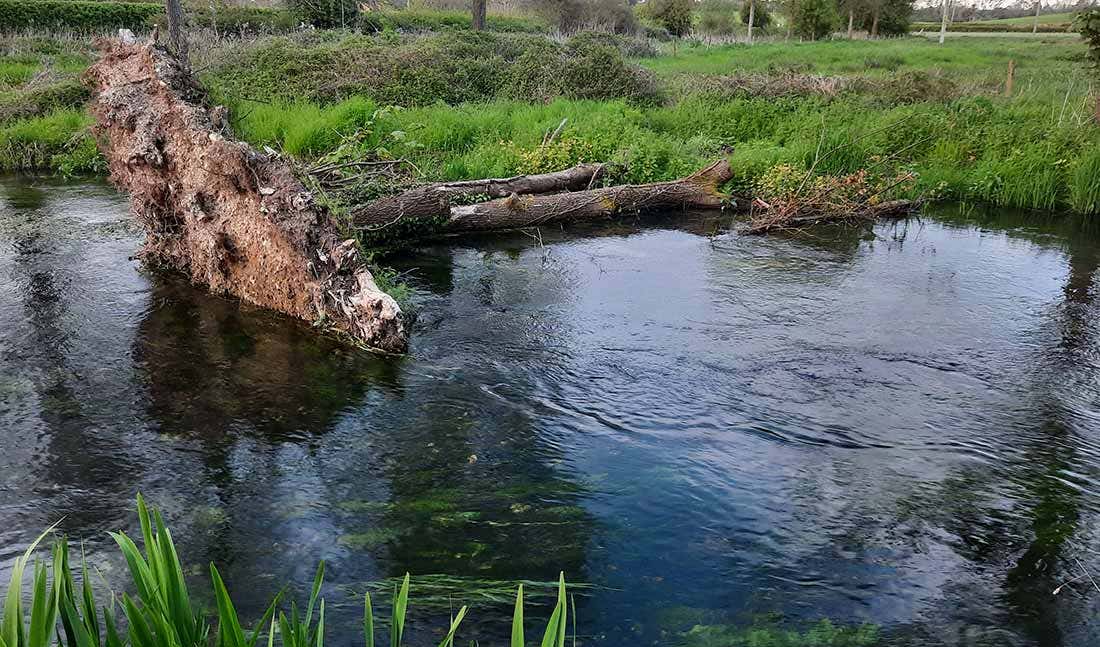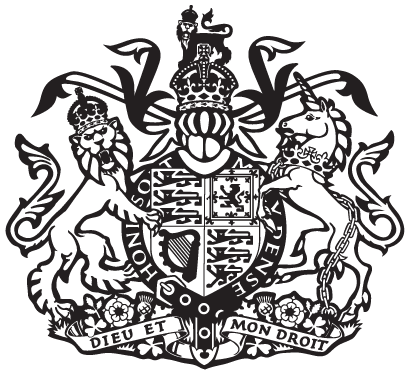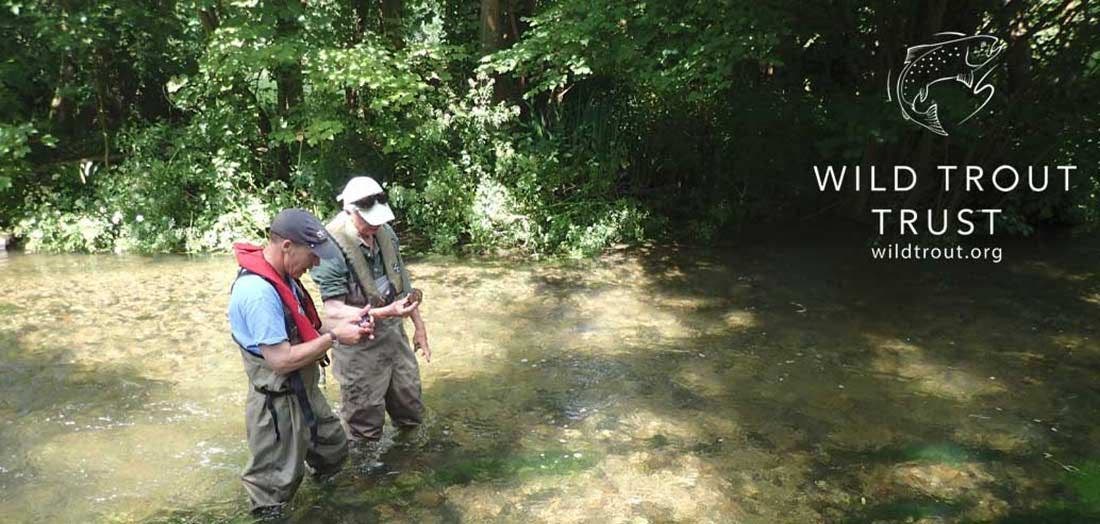In recent weeks and months, many column inches and social media posts have rightly been written about the health (or otherwise) of Britain’s rivers. Yet while preventing pollution from agriculture and the water industry is important to the health of the environment where so many of us love to fish, it’s still not the whole story…
Here at the Wild Trout Trust (WTT), our small team of Conservation Officers spend thousands of hours every year walking, talking and assessing rivers with angling clubs, landowners, and community groups. And the one topic that always comes up in these conversations is the way that our rivers have been structurally altered from their natural complex, meandering and generally ‘shaggy’ state.
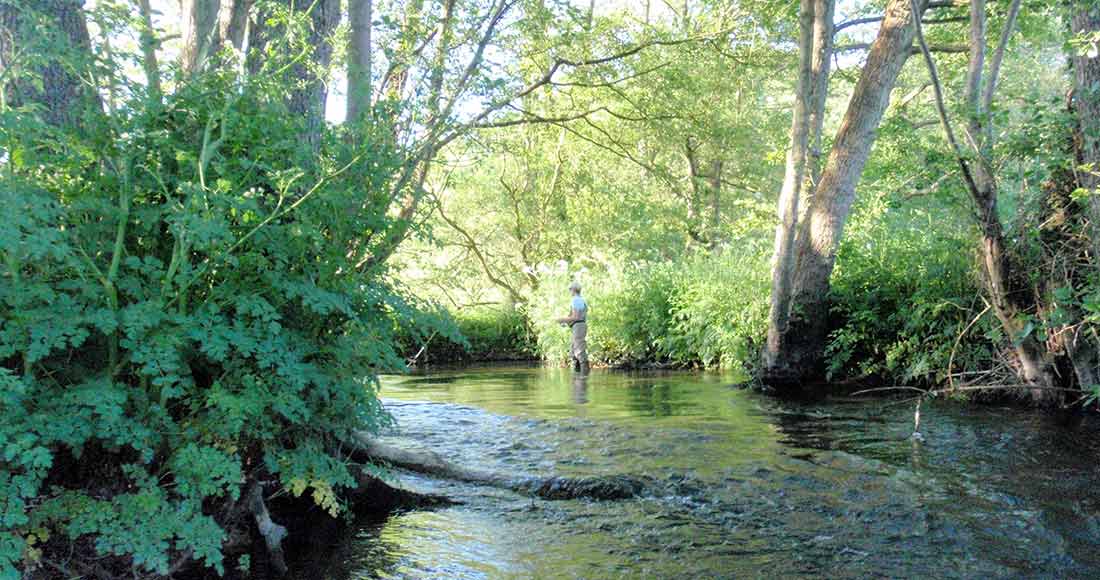

Over the course of many centuries, it’s an unfortunate fact most of Britain’s rivers have been unnaturally de-complicated: straightened, simplified, controlled and pushed to the very edges of their floodplains to make more space and straighter lines for agriculture and development.
Sometimes this was quite deliberate: for instance, pinning a river along an arrow-straight, high-level leat so that its energy could be harnessed for milling. At other times, it was almost accidental, the result of moving the river off its natural floodplain, and then repeatedly dredging and embanking the channel to keep it there. Habitually removing fallen trees from the water can have a similar effect - robbing the river of the structure, energy and varied flow patterns that it needs for natural processes like scour and deposition - the forces that create physical diversity, and thus biological diversity too.
The end result, as physical geography professor David Sear has pointed out, is that we’ve almost forgotten what a natural, healthy river really looks like.
IMPROVING OUR CHALKSTREAMS
In the case of chalkstreams, many of which probably started as braided, wandering channels in wet woodland, all these modifications have been particularly damaging. Compared to spate rivers, chalkstreams don’t have much kinetic energy. Once they’ve been artificially straightened and simplified, they may not be able to ‘re-wiggle’ themselves until after the next Ice Age has reshaped the landscape once again – and this makes our chalk stream habitat restoration work all the more important, here and now.
Read on for some recent examples of WTT’s work to improve some of our most valuable and vulnerable chalkstreams…
LWM IN THE BOURNE RIVULET
One of the best ways we’ve found to put the wiggles back into over-simplified habitat, on chalkstreams or any other rivers, is simply adding wood (also known in the environmental sector as Large Woody Material, or LWM). Felling naturally gnarly, complex trees into the channel gives a chalk stream back some of its energy again, producing pinch points of faster-flowing water which can start digging deeper pools or scouring silt away from spawning gravels almost immediately.
So, in two projects we’ve done recently on the Bourne Rivulet (in the wading boot steps of Harry Plunket Greene) we’ve worked with landowners to add whole trees to their rivers - in some cases simply pushing them into the channel, as if they’ve been put there by a storm, or using heavy machinery to shove large root wads into just the right position.
Mimicking nature in this way easily helps to vary river currents so that they scour deeper runs, or spill out into their floodplains, and brings benefits for all kinds of species, including kingfishers which commonly nest in toppled-over root plates. In future, we think we’ll need to focus even more on this kind of ‘lateral’ floodplain connectivity, as well as restoring ‘longitudinal’ connectivity by taking out redundant weirs and other in-river barriers that strangle natural processes.
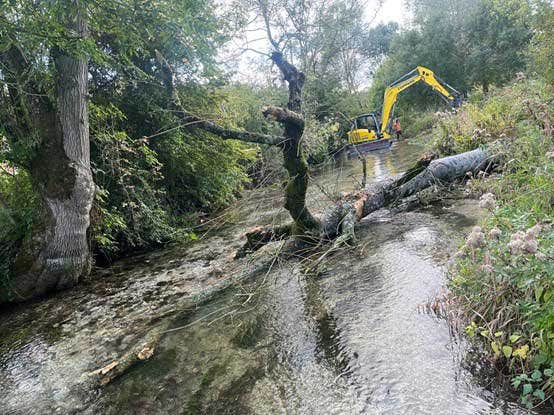

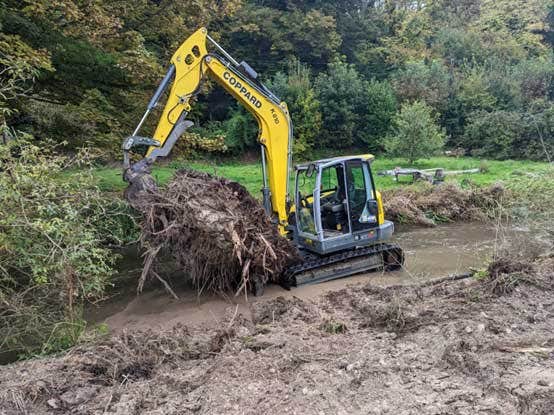

RE-ENERGISING THE MIMRAM
Most of our river improvement projects begin with a free Advisory Visit, and that’s what happened on the Mimram in Panshanger Park in Hertfordshire.
When our Conservation Officer Rob Mungovan visited in April 2019, local anglers hadn’t seen wild river trout or grayling spawning in their stretch of river for years. The river’s natural gravel was choked with sand and silt, and much of the channel was disproportionately wide for the slow-moving flows it carried.
Rob designed a project to fell a number of trees into the edges of the river, and even dared to drop some straight across this pretty chalk stream (just as nature would). This solved many problems at once: focusing available flows, flushing away fine sediments, and providing essential cover for trout of all ages. Now, wild trout spawning redds are regularly sighted in areas where the gravels have been scoured and sorted by revitalised currents around the woody structures, and these habitat improvements have benefited other species of fish like grayling and minnows too. Hinged bankside trees also provide feeding stations for passing otters, which feast on invasive signal crayfish and help to reduce the impact of this damaging non-native species.
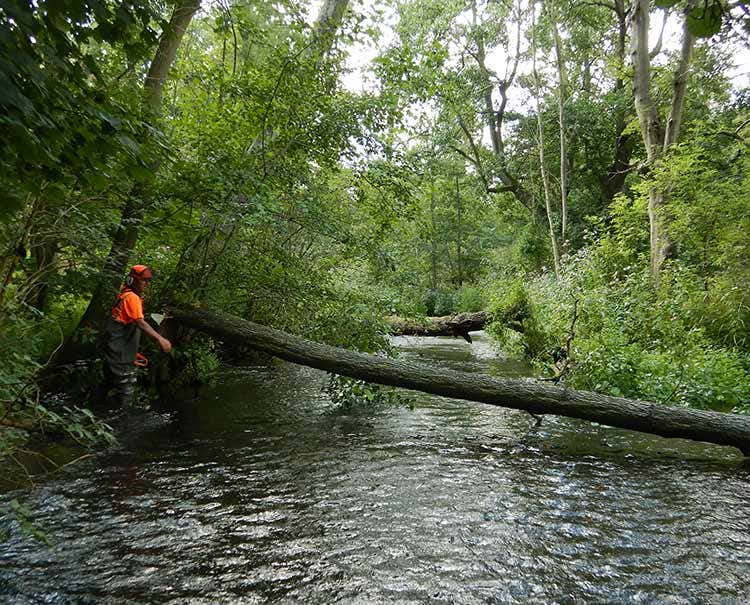

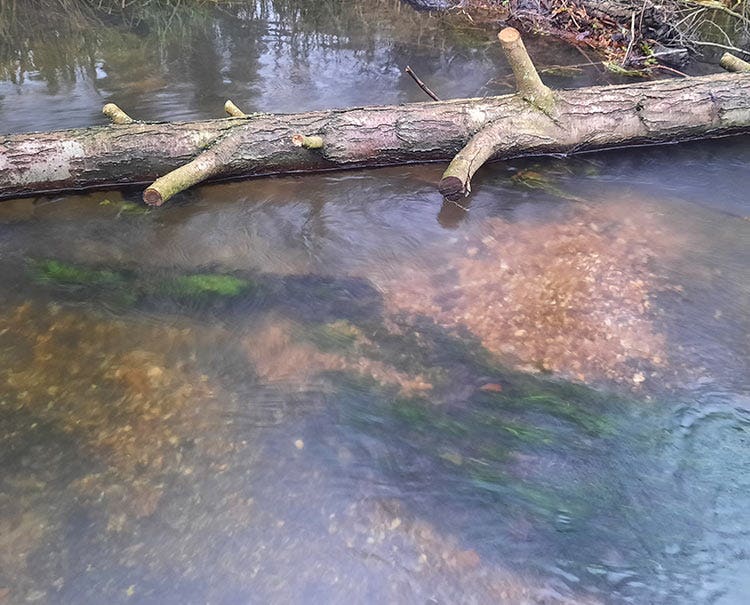

TREES IN THE UPPER TEST
‘Making rivers messy again’ is a mantra that we’re always keen to apply in appropriate places. On the Flashetts stretch of the upper Test, just a few hundred metres downstream of the spot where Oliver Kite had passed away in 1968, the river runs alongside a public footpath – where years of dog dipping had eroded the banks, making this stretch of water unhealthily wide, shallow and featureless.
As part of the Heritage Lottery funded Watercress and Winterbournes programme, we narrowed the channel again with tonnes of gravel, all held in place with logs to form a hard-wearing ‘beach’ for local people and their four-legged friends.
Elsewhere on this stretch, our Conservation Officers Nick Lawrence and Ed Eley also felled a number of trees into the river, allowing more sunlight to penetrate so that low, trailing vegetation can flourish, and building complex woody structures to provide plenty of cover for the upper Test’s wild trout.
Another notable point about this project was that it involved no fewer than four different landowners! The realities of riparian ownership often mean that we can often only work on relatively short reaches of river at any one time – but as we and other organisations deliver more and more projects on the same rivers, some of those reaches are starting to link up.
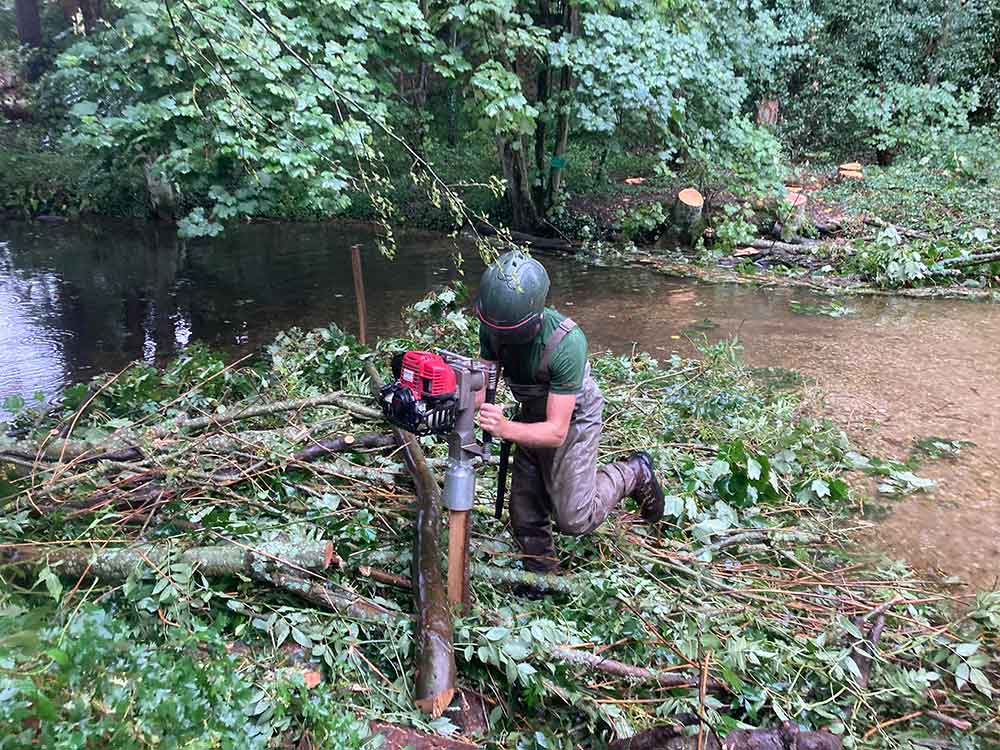

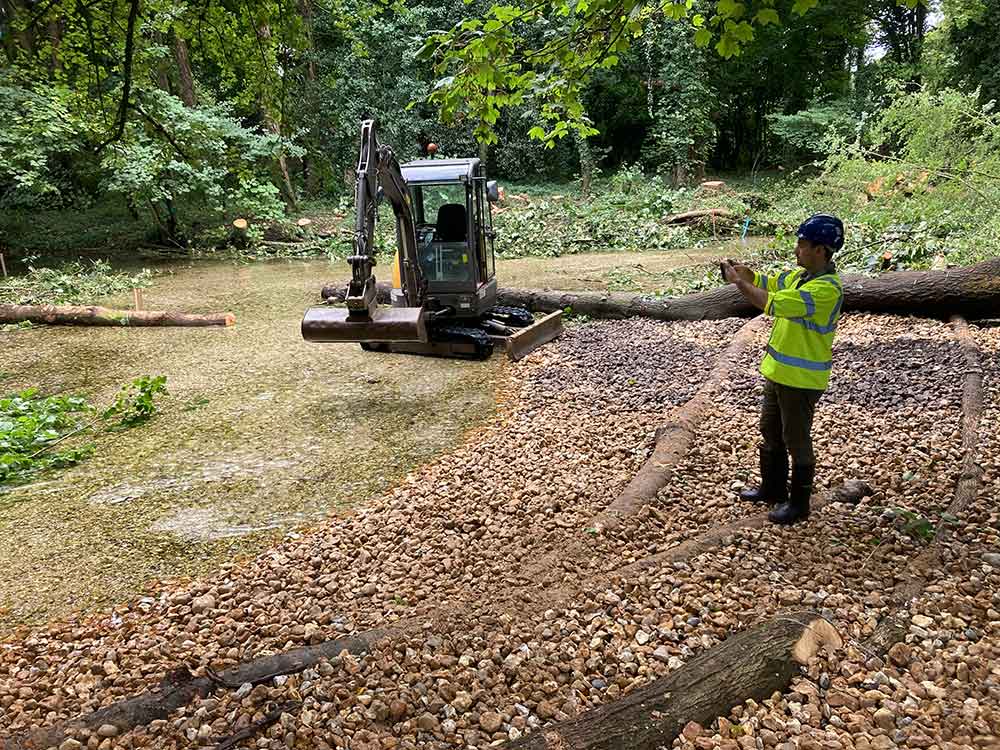

PEOPLE POWER ON THE MEL
A further project in the unsung chalkstreams in the northern Home Counties has been our work on the little River Mel, in and around the village of Melbourn.
Over the years, this tiny chalk stream had become badly degraded by low flows and overshading – so we cut back lots of overhanging vegetation during winter, when birds weren’t nesting, before carefully adding 200 tonnes of chalk and gravel to restore the natural contours of a healthy river bed.
Hands-on river projects are a brilliant way to get local people involved with and caring for their local environment, and we’ll soon be working with volunteers from the River Mel Restoration Group to replant bankside areas with colourful and pollen-rich native plants. On a personal note, this project has also been a particular labour of love for our Rob Mungovan, who grew up in the area and even went to school alongside this stretch of stream which he’s finally been able to rewiggle!
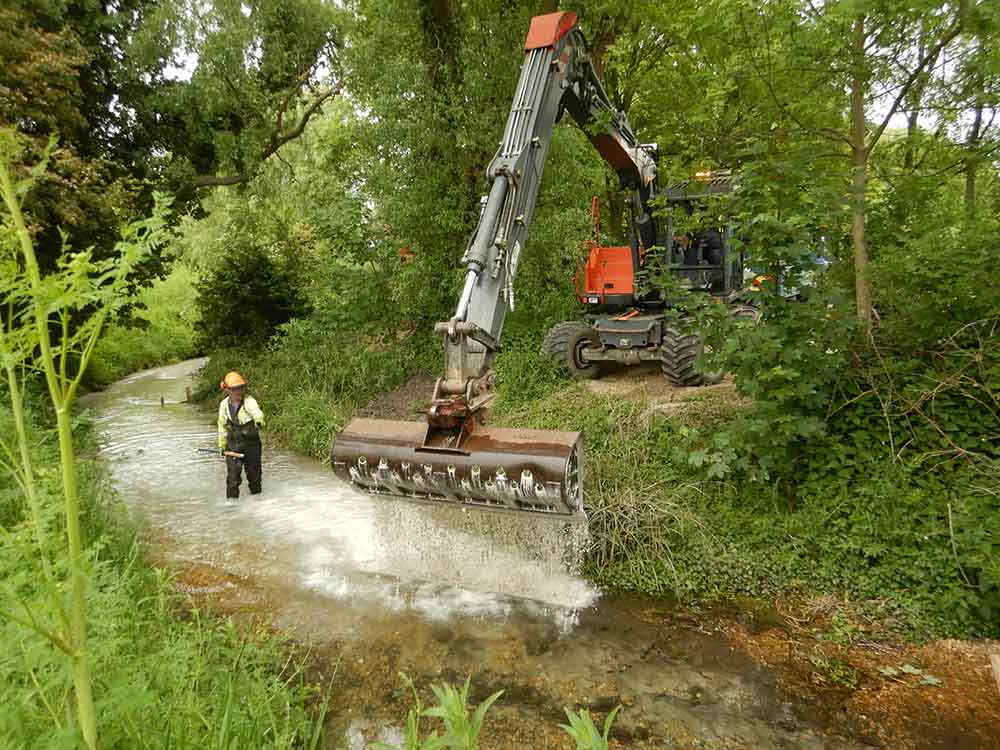

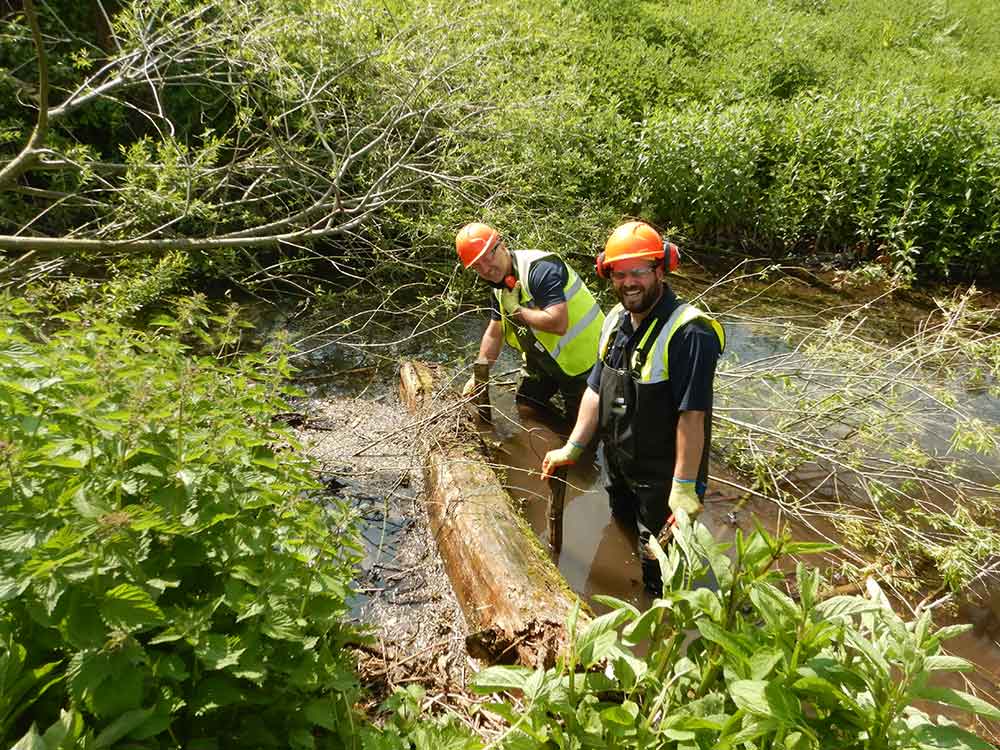

OUR CHALKSTREAMS’ FUTURE
Most of our precious chalkstreams have been challenged for decades by pollution, lack of water, and physical damage like dredging and straightening.
Sadly, practical projects like ours can’t provide more or better-quality water for chalkstreams like the Itchen, Test, Mel and Mimram. But as you’ve read above, we can certainly restore habitat diversity, and help make the rivers more resilient to future challenges like water quality problems and high or low flows exacerbated by climate change.
To find out more about the Wild Trout Trust and the work we do, please visit www.wildtrout.org
